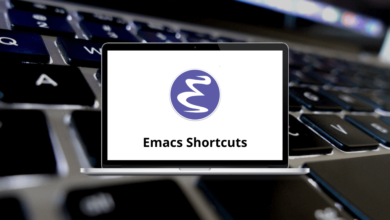15 Best Spotify Alternatives & Competitors
With the growing number of music streaming platforms available today, finding one that fits your specific needs has become increasingly possible. While Spotify remains one of the most widely used services in the world, not everyone finds it to be the perfect fit. Whether it’s due to subscription costs, limited features on the free plan, regional restrictions, or simply a desire for a different user experience, many listeners are exploring spotify alternatives platforms in 2025.
Table of Contents
Several Spotify alternatives offer similar features such as curated playlists, offline listening, and music discovery tools while others focus on more niche offerings like higher audio quality, better support for independent artists, or regional music collections. Some users also prefer platforms that integrate better with their existing ecosystems, like Apple Music for iOS users or YouTube Music for those already using Google services.
The 15 Best Spotify Alternatives in 2025
Each service is evaluated based on key features, strengths, potential drawbacks, and ideal user scenarios to help you make an informed decision. checkout Spotify Shortcuts.
1. Apple Music
Apple Music offers a massive catalog of over 100 million songs, paired with curated playlists and seamless device integration. It supports high-resolution audio formats and works especially well within the Apple ecosystem. Though it lacks a free tier, it remains a top choice for quality-conscious users.
Best For: iPhone or Mac users looking for premium audio quality
Features of Apple Music:
- Lossless and spatial audio
- Human-curated playlists
- Integration with iOS/macOS
- iCloud Music Library
- Offline downloads
Pros of Apple Music:
- High-quality audio options for better sound experience
- Reliable syncing across Apple devices
- Consistent updates with exclusive artist content
Cons of Apple Music:
- No free tier after trial
- Less optimized for Android or Windows users
2. YouTube Music
YouTube Music combines official tracks, remixes, covers, and live performances into one unified streaming platform. It offers strong integration with Google services and supports both music and video content. The free tier is ad-supported, while Premium unlocks full features.
Best For: Listeners who enjoy both music and video content
Read More: 28 YouTube keyboard Shortcuts
Features of YouTube Music:
- Access to YouTube’s full music catalog
- Smart recommendations based on history
- Audio-video switching
- Offline listening (Premium)
- Integration with Google Assistant
Pros of YouTube Music:
- Includes unofficial and hard-to-find tracks
- Personalized suggestions based on YouTube habits
- Useful for users who also consume music videos
Cons of YouTube Music:
- Ads on the free version can be frequent
- Interface may feel cluttered for music-only users
3. Amazon Music Unlimited
Amazon Music Unlimited provides access to a large music library with HD and Ultra HD audio options. It integrates well with Alexa and Echo devices, making it a convenient choice for Amazon ecosystem users. It is separate from the more limited Amazon Prime Music.
Best For: Amazon Prime members and Alexa users
Read More: 15 Amazon Music Player Shortcuts
Features of Amazon Music Unlimited:
- HD/Ultra HD streaming
- 100+ million tracks
- Hands-free Alexa voice control
- Offline listening
- Curated playlists and stations
Pros of Amazon Music Unlimited:
- High-quality streaming without extra cost
- Works well with Echo and Alexa devices
- Discounts for Prime members
Cons of Amazon Music Unlimited:
- App experience is less polished than competitors
- Library updates can be slow in some regions
4. Tidal
Tidal is known for its focus on high-fidelity audio and support for artists. It offers HiFi and Master-quality streams, and pays higher royalties to musicians compared to many other platforms. The interface is clean and focused on quality listening.
Best For: Audiophiles and users who value ethical music support
Read Next: 12 Tidal Desktop Keyboard Shortcuts
Features of Tidal:
- FLAC and MQA audio formats
- Editorial content and artist interviews
- Offline mode
- High artist payout model
- Integration with premium sound systems
Pros of Tidal:
- Best-in-class audio quality (HiFi, Master)
- Ethically appealing for artist support
- Editorial recommendations highlight new talent
Cons of Tidal:
- Cost is higher than basic streaming tiers
- Limited music video content compared to YouTube
5. Deezer
Deezer is a versatile streaming service available globally, offering a wide range of content including podcasts and radio. Its standout feature is “Flow,” a personalized stream of favorite and new songs based on listening habits.
Best For: Global users who enjoy diverse audio content
Check out – 10 Deezer Keyboard Shortcuts
Features of Deezer:
- Flow AI-powered music mix
- 90+ million tracks
- Lyrics support
- Podcasts and radio channels
- Offline mode
Pros of Deezer:
- Strong personalization through Flow feature
- Good balance of music and spoken content
- Available in over 180 countries
Cons of Deezer:
- HiFi audio only in higher-tier plans
- Smaller U.S. market presence compared to others
6. Qobuz
Qobuz caters to listeners who prioritize high-resolution audio and detailed album metadata. It supports FLAC streaming and also offers digital music purchases. With a strong editorial presence, it’s ideal for those who enjoy music exploration and in-depth content.
Best For: Audiophiles and music collectors
Features of Qobuz:
- Studio-quality FLAC streaming
- Extensive album liner notes and metadata
- Offline listening
- Download-to-own music store
- Curated editorial playlists and reviews
Pros of Qobuz:
- Excellent audio fidelity (24-bit up to 192 kHz)
- Rich editorial content for deeper discovery
- Purchase option for DRM-free music
Cons of Qobuz:
- Limited library compared to mainstream platforms
- No AI-based music recommendations
7. SoundCloud
SoundCloud is known for its large user-generated content base, making it ideal for discovering indie and emerging artists. It blends professional releases with grassroots uploads, creating a platform rich in musical diversity.
Best For: Fans of indie music and upcoming artists
Read More: 12 Soundcloud Keyboard Shortcuts
Features of SoundCloud:
- Independent and underground artist uploads
- Community interaction features
- Audio commenting
- Offline listening (Go+ plan)
- Creator tools for uploading music
Pros of SoundCloud:
- Great for discovering new and unsigned talent
- Strong creator community and interaction
- Free access to most content
Cons of SoundCloud:
- Inconsistent audio quality across uploads
- UI can be overwhelming for new users
8. Pandora
Pandora offers music streaming through personalized radio-style stations rather than full on-demand access (except in its Premium plan). It uses the Music Genome Project to deliver automated playlists based on user preferences.
Best For: U.S. users who prefer radio-style music streaming
Read Next: 10 Pandora Keyboard Shortcuts
Features of Pandora:
- Station-based discovery
- Simple user interface
- Offline listening with Plus and Premium
- Voice mode for hands-free use
- Cross-device syncing
Pros of Pandora:
- Excellent for passive listening and background music
- Effective music discovery via algorithms
- Low data usage with radio streams
Cons of Pandora:
- Limited global availability (mostly U.S.)
- Free version has minimal user control
9. Napster
Formerly known for peer-to-peer sharing, Napster is now a legitimate subscription-based music service. It offers on-demand access to millions of tracks, curated playlists, and offline listening.
Best For: Listeners looking for a simple and reliable Spotify alternative
Features of Napster:
- Large music library
- Curated playlists
- Offline playback
- Family subscription options
- Artist-focused recommendations
Pros of Napster:
- User-friendly and stable app interface
- Good family plan value
- Focused on user privacy and artist compensation
Cons of Napster:
- Less brand recognition today
- Limited extra features compared to major platforms
10. Audius
Audius is a blockchain-powered music platform focused on decentralization and supporting independent artists. It’s open and free to use, with streaming access to music primarily from up-and-coming creators.
Best For: Listeners interested in new tech and supporting independent artists
Features of Audius:
- Decentralized, artist-owned platform
- Free streaming
- Creator tokens and blockchain incentives
- Community-led curation
- No ads
Pros of Audius:
- Artists retain more control and earnings
- Completely free and open access
- Community-focused innovation
Cons of Audius:
- Smaller library with mostly unsigned artists
- Still developing core features (e.g., offline mode)
11. Boomplay (popular in Africa)
Boomplay is one of the leading music streaming platforms in Africa, offering a mix of local, regional, and international content. It focuses on Afrobeat, gospel, and other popular African genres, with growing global interest.
Best For: Users in Africa or fans of Afrobeat and regional African genres
Features of Boomplay:
- Strong catalog of African music
- Offline listening
- Curated playlists by genre and mood
- Music video support
- Artist promotion tools
Pros of Boomplay:
- Excellent coverage of African music scenes
- Offline access for low-data environments
- Regular updates with trending local content
Cons of Boomplay:
- Interface may feel basic outside core markets
- Limited appeal for Western music-focused users
12. Anghami (popular in the Middle East)
Anghami is a music streaming service focused on the Middle East and North Africa (MENA) region. It features Arabic music, podcasts, and international tracks, with tools for personalization and social sharing.
Best For: Arabic-speaking users or those interested in MENA region music
Features of Anghami:
- Large Arabic and international library
- Podcasts and live radio
- Offline playback
- Lyric display
- Social and sharing features
Pros of Anghami:
- Strong selection of Arabic music and artists
- Integrated podcast and radio content
- Light and fast mobile app
Cons of Anghami:
- Limited global music discovery tools
- Ads on the free version may be disruptive
13. JioSaavn (popular in India)
JioSaavn is a popular music streaming app in India, combining Bollywood, regional Indian music, and international content. It integrates well with the Jio mobile ecosystem but is also widely used outside of it.
Best For: Indian music fans or users in India
Features of JioSaavn:
- Vast collection of Indian music (Hindi, Tamil, Telugu, etc.)
- Curated playlists and radio stations
- Lyrics sync
- Offline downloads
- Podcasts and artist originals
Pros of JioSaavn:
- Excellent for Bollywood and regional Indian content
- Free tier available without login
- Clean, responsive app
Cons of JioSaavn:
- Audio quality on free tier is limited
- Some exclusive content behind paywall
14. Gaana (India-focused)
Gaana is another leading Indian streaming service, offering a mix of Hindi, regional, and international music. It’s available in multiple Indian languages and offers curated experiences for different user groups.
Best For: Listeners seeking Indian music in various languages
Features of Gaana:
- Multi-language support
- Bollywood and devotional content
- Smart recommendations
- Offline listening
- Lyrics and music videos
Pros of Gaana:
- Extensive regional and devotional music options
- Local-language UI enhances accessibility
- Affordable premium options
Cons of Gaana:
- Occasional ad interruptions even on lower paid tiers
- Limited focus on global indie or niche genres
15. eSound (Free music streaming)
eSound is a lesser-known, lightweight music streaming app that uses YouTube as its backend. It allows users to create playlists, listen to trending tracks, and stream music for free with an easy-to-use interface.
Best For: Users wanting a free, no-login music experience
Features of eSound:
- Free streaming of trending tracks
- Playlist and favorite track management
- Cross-platform availability
- YouTube-based streaming
- Minimal app size
Pros of eSound:
- Completely free and accessible
- Simple, user-friendly interface
- No login required to use core features
Cons of eSound:
- Limited to streaming; no offline mode
- Occasional playback issues with YouTube-based content
What Makes a Good Spotify Alternative?
Before diving into the best Spotify alternatives in 2025, it’s important to understand what makes a music streaming service worth considering. While Spotify offers a well-rounded experience, there are several reasons users might look for a replacement such as different pricing, missing features, or a desire for better sound quality or artist support.
Here are some key factors to look for when evaluating a Spotify alternative:
1. Audio Quality
High-resolution or lossless audio formats are increasingly important to audiophiles. Platforms like Tidal and Qobuz offer FLAC or HiFi streaming, which is a step up from Spotify’s compressed formats.
2. Music Library Size
The best music streaming services offer extensive libraries, including global, regional, and independent music. A good Spotify replacement should have a broad and diverse catalog.
3. Personalized Recommendations
Spotify is known for its algorithm-driven suggestions. If you value discovery, look for services that offer smart curation, AI-powered playlists, or genre-based stations.
4. Offline Listening
Whether commuting or traveling, the ability to download songs and listen offline is a must-have for many users.
5. Cross-Platform Support
An ideal Spotify alternative should work seamlessly across desktop, mobile, smart speakers, and even car infotainment systems.
6. Pricing and Plans
Some users are searching for free Spotify alternatives, while others want more value from premium subscriptions. Comparing plan structures can help you make a better choice.
By keeping these criteria in mind, you’ll be better equipped to choose the best music streaming platform for your needs in 2025.
Conclusion
While Spotify remains a dominant player in the music streaming world, it’s not the only option and certainly not the best fit for everyone. Whether you’re looking for high-resolution audio (like Tidal or Qobuz), regional music (such as JioSaavn, Gaana, or Boomplay), or a platform focused on indie artists (like SoundCloud or Audius), there’s a Spotify alternative that meets your needs.
The best choice depends on your listening habits, preferred genres, desired audio quality, and budget. Some users may prioritize features like offline access or integration with smart devices, while others may care more about artist support or music discovery tools.
Before making a switch, consider trying out the free tiers or trials offered by most platforms to find the one that feels right for you. With so many alternatives available in 2025, it’s easier than ever to tailor your streaming experience to your preferences.
READ NEXT:





